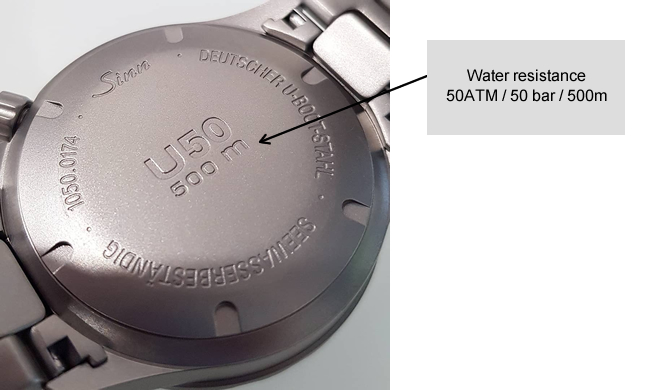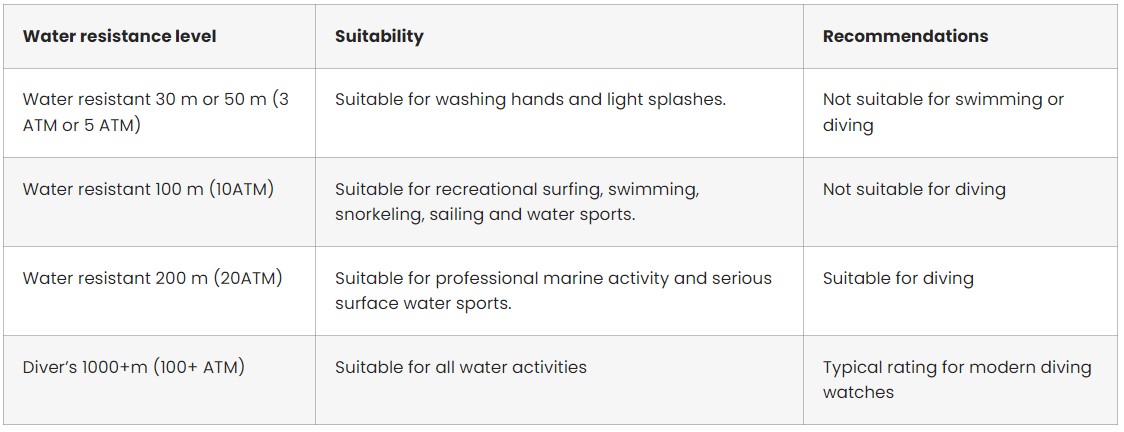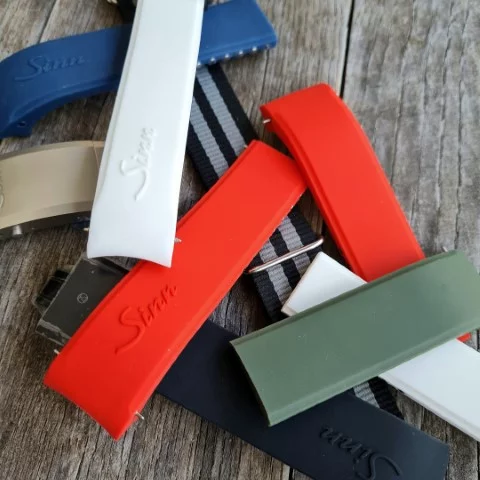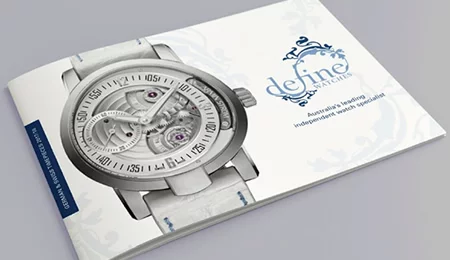Not sure about the climate where you live but Queensland is pretty humid at the moment, so we thought it might be a good time to review some watch care tips for wet weather conditions.
These points are general in nature but should serve as a good starting point for wet weather watch care.
Is watch storage important?
YES. First and foremost, we recommend keeping your watch as dry as possible whilst in storage, this means:
- away from humid conditions (and direct sunlight)
- check that all crowns and pushers are securely fastened so moisture stays out of watch cases as much as possible
- make sure your watch is up to date on service so that the watch seals are doing their job
What is meant by water resistance?
Another important piece of information that is often misleading for those new to the world of watches is the level of water resistance.
As a general rule, you shouldn’t swim/dive and constantly immerse your watch if it is under 10 bar (also known as 10 ATM, 100m) resistant.
There are exceptions to the rule, but this is a serviceable cut-off point to keep in mind.
This information is usually stamped into the case but can also be found in the instruction manual that comes with your watch.

This table is designed as a guide to pressure/water resistance but always check the manufacturer’s specification to make sure you are using your watch in the correct manner in the appropriate environment:

Can humidity damage my watch?
The short (but vague) answer is… possibly. All watches, even those with 100m+ water resistance, should be kept away from humid shower and spa conditions. Although these watches are watertight, they are not necessarily resistant against humid/hot air which can permeate the watch and allow moisture into the movement. If you do notice water inside your watch you should have it serviced as quickly as possible, even if the moisture seems to ‘go away’ on its own.
What do I do if I notice water inside my watch?
You’d be surprised how many times we’ve had watches in for service because owners have noticed condensation under the glass/on the dial during a flight only to have it disappear after landing. But the problem isn’t solved, the moisture has simply reverted to the coldest part of the watch, which is usually somewhere in the intricate movement (where it can do most damage by corroding parts).
This isn’t as strange as it sounds because moisture inside a watch will always travel to the coldest part of the timepiece. During temperature changes from hot to cold (ie a flight) the dial and glass are cooled to the ambient temperature which may be significantly colder than outside. Thus, any moisture hiding inside the watch will be attracted to the coldest area. Once the watch leaves the cooled environment and returns to the heat and humidity, any visible moisture may also retreat – BUT NOT DISAPPEAR!
Some ‘first aid’ tips…
- Book in for a service as soon as possible to avoid any or further damage and corrosion to movement parts, dial, hands, case and seals.
- Store the watch in a dry place and release the crown if permissible.
It is also good practice to refer to the manufacturer’s specifications for exact details.


7 tips to keep watches safe around water and humidity
- Be careful where/how you store your watch (cool, dry, no direct sunlight or dramatic heat changes)
- Be careful where/how you wear your watch (always make sure your crowns and pushers are secured and try not to operate pushers in water unless you know it is allowed by the manufacturer)
- Understand your watch’s specifications when it comes to water resistance and functionality (don’t push things beyond their limit or expect your watch to do things it isn’t designed to do)
- Keep up to date with your services and use a reputable trained watchmaker (especially if it’s a piece you can/do frequently wear in water)
- If worn in salt water or chemically-treated water like pools, get into the habit of rinsing your watch under clean water after immersion (this quick exercise will wash off any debris, salt particles or chemicals that may build up over time and clog crown/pushers or even band and clasp systems)
- Keep all watches away from saunas, steam rooms, showers etc… yes, in case you are wondering, you should take it off if you want to prolong its life and get the most time out of each service.
- The last point should go without saying but… please make sure your service includes a pressure test if it has a resistance over 5bar (5 ATM, 50m). Any reputable watchmaker should include this as part of a maintenance service but you can always check for your own peace of mind.
That’s it! So stay cool, dry and safe because that’s the best way to make sure your watch does too.










